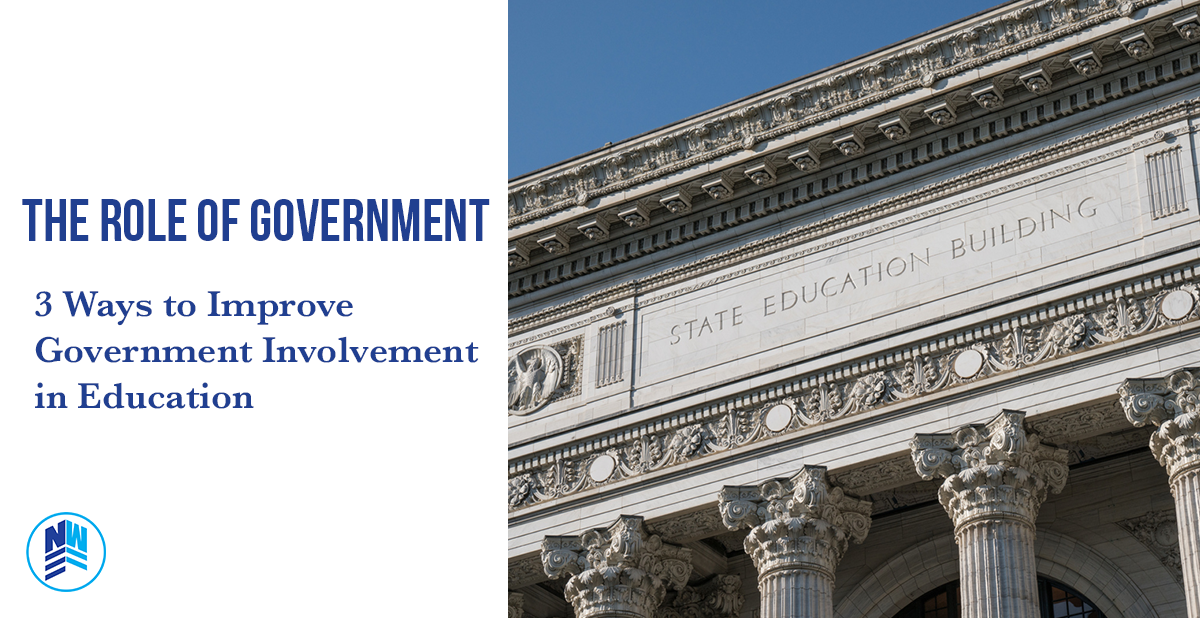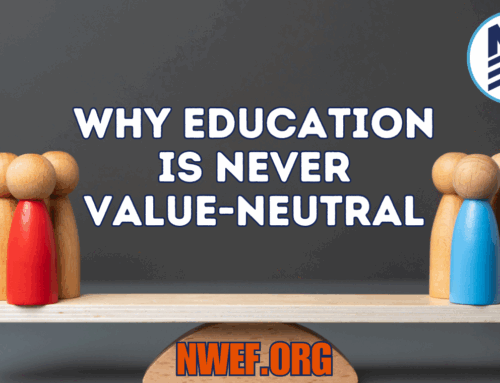
From local schoolboards to the Department of Education, the government is involved in every aspect of public schools.
However, governments like the United States do not simply fund education out of the goodness of their hearts. Education provides invaluable results to governments. The most significant of these results is strong economies.
Employing 6,704,281 people in 2021, the US public education system provides a huge job market for teachers, administrators, and other school support personnel. The childcare services provided by schools enable more parents to work during the school day, freeing up discretionary income and boosting the national employment rate.
Public education also contributes to the future success of the national economy by creating well-informed people who advance business, science, technology, art, defense, and other key fields in America. Our children will one day run this country, and the government considers it a good investment to help equip them for that task.
Critics question the appropriateness or even the necessity of government involvement in education. Some think that education should be completely privatized, while others call for drastic reforms.
Here at the Noah Webster Educational Foundation, we recognize the important role that the government plays in offering free public education. But—while public education is a valuable part of our country—it isn’t always run in the best interests of citizens, particularly parents and their kids.
In this post, we will explore the history and structure of public education and discuss the current approach that the government takes to the schooling of our children. A review of the modern education scene leads to a few areas that need definite improvement—a job that all taxpayers must attend to in order to preserve the futures of American kids.
The History of Government in Education
The United States of America is a constitutional republic. “Constitutional” means we have a governing document to keep the government in line. “Republic” means that our people choose representatives through elections.
In other words, the government’s power comes solely from the people and the Constitution.
Reflecting the educational priorities of its citizens, the American government has a long history of involvement in education. It helps facilitate and empower the education of citizens by:
- Making public schools available to everyone,
- Allocating tax dollars to education, and
- Creating education laws that protect equal access, prevent discrimination, and support the public good
Pennsylvania was the first state to establish free public schools in 1790. Now, every state has its own constitution with articles governing public schools.
The Constitution says that all power not specifically given to the federal government belongs to the states and the people; interestingly, it has nothing to say about public education.
Despite these facts, the federal government started making provisions for public education early in America’s history.
Several land ordinances in the 1780s encouraged and set aside land for public schools. In 1867, President Andrew Johnson created a limited Department of Education. The people pushed back, concerned about federal overreach.
From then until the 1970s, the federal government monitored education from inside other agencies. Finally, the current Department of Education was established in 1979. It was designed to further government programs, federal funding, and desegregation.
As of 2018, there were 130,930 public schools in the United States, serving 50.8 million children.
The Structure of Public Education
Today, control of public education spans each level of our government: federal, state, and local. Each of these spheres has a specific responsibility in governing public schools, and each contributes tax dollars to fund local school districts.
Federal
People disagree about who should have more power in education: the national government, the states, or the local government.
Currently, these three parts of the government share authority. The national Department of Education researches education data, prevents discrimination, raises national issues, and decides how much federal funding gets dispersed to states.
Our national leaders also create education legislation such as No Child Left Behind of 2002 and the Every Student Succeeds Act of 2015 in attempts to increase the national education level and keep states accountable.
State
While the central government has a good deal of influence over education, states have the most power.
The Teach-nology website explains, “The system works on the premise that if it was the state taxpayers who paid for the schools, they should be the ones who direct how that money is used.”
States are in charge of many educational decisions, including:
- Allocating a percentage of state taxes to education
- Deciding what school choices are available to their students (i.e., public, private, charter, homeschool, etc.)
- Mandating a state testing and curriculum standard
- Establishing teaching methods
- Licensing teachers and administrative staff
- Setting graduation requirements
- Overseeing the election and/or appointment of state and local school boards
Local
Local governments used to have more power in education. However, in the early-to-mid 1900s, states began consolidating school districts in hopes of more efficiency, fair access, and improved quality.
Today, a local school board still has a measure of control over the education process in its district. School board members are typically elected by local citizens, but some states allow for appointed school board members (taking the power out of taxpayer’s hands).
Typically, school boards handle district-wide budgets, curriculum choice, hiring decisions, facility needs, and local education policies.
What Needs to Improve
As we mentioned at the beginning of this post, education is an extremely rewarding investment for the government. However, while the government benefits from educated citizens, students do not flourish when their only opportunity is government education.
Education reform is always a hot topic in the media. However, when it comes to governmental involvement, a few issues come to the forefront.
1. Monopolization and Lack of School Choice
Our government has a responsibility to protect us from the economic and societal risks of monopolies. In reality, though, they have created their own monopoly via public schools.
Taxpayers must fund them or risk eviction from their own private properties. Parents must send their children or bear the additional thousands of dollars of annual private school/homeschool costs for daring to choose a different path.
One writer asks an interesting question of the government’s insistence on protecting this monopoly: “Do you think nobody would willingly entrust his children to you or pay you for teaching them? Why do you have to extort your fees and collect your pupils by compulsion?”
Many states, pushed by local parents, have adopted school choice measures to loosen the firm grip of public schools on their children. Choice proponents offer a variety of solutions. The essence of these ideas is to allow parents to choose the best school for their child. To make this possible, the government would allocate that child’s public school tax dollars (something like $14,439 per student per year as of 2017) to follow them to the school of their choice.
School choice continues to be a hot-button issue nationwide, particularly in the aftermath of COVID-19.
2. Accountability
In theory, public schools are accountable to taxpayers. Many local and state school board positions are filled via election. While the Secretary of Education is an appointed cabinet position, voters also have the opportunity to impact this choice through presidential elections.
However, in reality, few taxpayers ever engage with their local or state school board. Over 30% of school board candidates win by default because they had no opposition; even when there are multiple candidates, most school board elections have a notoriously-low voter turnout (often only 5-10% of the voting population).
To compound the issue, school board officials often stop listening to what their constituents want. Political pressure and disagreements can quickly overwhelm campaign promises.
3. Education as a Local Business
Despite the nonprofit status of public schools, education is a business.
As control migrates to state and federal legislation, the fact remains: citizens are best served when education is local and consumer-based. When school districts fail to give parents what they want, it’s no wonder that parents are withdrawing their children in droves.
“Educators typically take issue when their schools are called businesses. Nearly all schools are non-profit, and educators take pride in working purely on behalf of the public good. But we are, in fact, businesses. Rather than deny reality, we should seek to embrace what other enterprises have done to succeed and incorporate them, where possible, into making our service offerings better meet the needs (current and future) of our customers. At the very least, we must learn to maximize our efficiency and effectiveness as teachers by beginning to view our schools as competitive businesses offering a precious service- namely, education.”
Educator and school board member Dr. Karen Hiltz talks with NWEF president Melvin Adams about the business side of public education in this interview segment:
Public education isn’t a magical place that turns tax dollars into well-educated children without the need for oversight. In many ways, the system is very broken and requires locally-informed solutions in order to improve.
This will only happen as taxpayers—and parents in particular—step up to challenge the status quo and require publicly-funded schools to offer the quality instruction that their children deserve.
Now that we’ve talked about the role of government in education….what about your role? Here at NWEF, we provide articles and actionable resources so you can start taking a stand in your local school district.
Sign up for updates to stay informed about ways you can make a difference.




